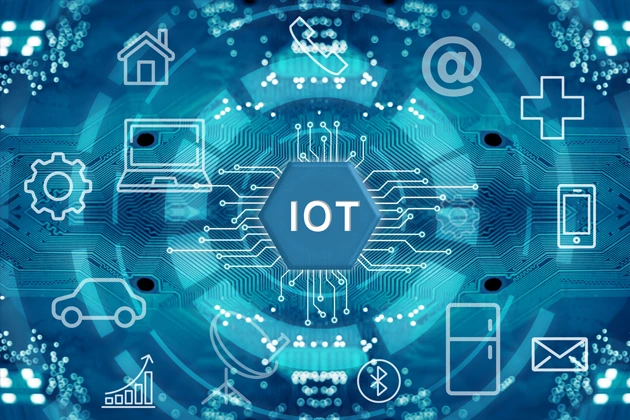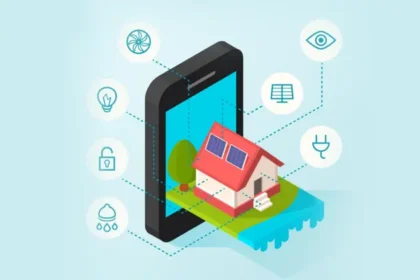The Internet of Things (IoT) has transformed the way people engage with their environment by linking objects to the web to boost efficiency and convenience across industries. Smart environments are becoming increasingly popular as they utilize technology to design spaces that can adapt seamlessly to requirements. This article delves into how IoT plays a role in shaping these cutting-edge zones.
Understanding Smart Spaces
Smart spaces are places that have the technology to detect and react to people’s movements and behaviors effectively. These areas use sensors, data analysis, and connectivity to enhance how people interact with the environment. Whether in houses or workplaces, smart spaces create a connection between individuals and technology. By incorporating the Internet of Things (IoT), these settings evolve from being static to becoming technological ecosystems.
IoT and Home Automation
Home automation is widely embraced as an application where devices like smart thermostats adjust heating and cooling according to patterns of use for energy savings and convenience, and lighting or security can be controlled via internet connectivity. This is just one example of the possibilities of IoT and home automation.
Furthermore, IoT-equipped gadgets offer residents data access to track usage and enhance their living spaces efficiently. Consequently, smart homes evolve into eco-budget dwellings that epitomize contemporary lifestyles.
Enhancing Office Environments
Integrating technology in offices can enhance efficiency and teamwork dynamics by adapting lighting to natural light levels for a work environment and using sensors to maintain good air quality for employees’ well-being.
In addition to that, the Internet of Things makes hot desking possible as a way of organizing workspaces, and it is increasingly becoming more popular. With the help of booking systems connected to the Internet of Things, workers can book desks according to their availability, which helps make use of space. This method encourages teamwork and also decreases the demand for big office spaces ultimately cutting down on operational expenses.
Healthcare Applications
The healthcare industry also sees advantages from integrating technology into smart environments. Hospitals and medical facilities utilize IoT devices to monitor patients’ vital signs for prompt care interventions, while wearable gadgets like smart watches offer up-to-the-minute health information so individuals can take charge of their wellness proactively.
In addition, the Internet of Things improves the patient’s experience by simplifying tasks.
For example, automated check-in systems decrease waiting times, enabling healthcare providers to dedicate attention to patient well-being. Therefore the Internet of Things is vital in establishing patient-focused healthcare settings.
Impact on Retail Spaces
Retailers are increasingly using the Internet of Things (IoT) to improve customer satisfaction and make their operations more efficient. These smart shelves have sensors that keep track of inventory and notify staff when items need restocking. This helps ensure that shelves are always well stocked, which leads to customers.
Moreover, the Internet of Things (IoT) facilitates customized shopping experiences. By examining customer information, merchants can customize promotions and suggestions, increasing interaction and driving sales. Intelligent fitting rooms, which come with mirrors, enable consumers to ask for sizes or colors within the room itself, making the shopping experience smooth and effortless.
Challenges and Considerations
While there are benefits to using IoT in environments and buildings, certain obstacles come with it, too. Security is an issue since connected devices can be targeted by cyberattacks. It’s crucial to have cybersecurity measures in place to safeguard information and uphold user confidence.
Furthermore, the incorporation of the Internet of Things (IoT) necessitates a commitment to upgrading infrastructure and technology. Companies need to consider the advantages of adopting IoT in comparison to the expenses and potential interruptions. Facilitating compatibility among devices from producers presents another obstacle that calls for established protocols to enable communication.
Future Prospects
The outlook for future prospects seems bright as IoT takes on a new role in their development and growth. As technology progresses, smart spaces will become more intuitive and focused on user experience. Innovations like artificial intelligence and machine learning will contribute to the enhancement of IoT functionalitiesـ, allowing spaces to predict human requirements better.
Furthermore, the significance of the Internet of Things (IoT) in advancing sustainability is immense. Therefore, smart environments help conserve the environment by utilizing resources and supporting initiatives to create a more eco-friendly tomorrow. As communities work towards sustainability, the value of IoT in shaping environments is bound to increase.
Conclusion
The Internet of Things (IoT) plays a significant role in creating environments and changing the way people engage with their surroundings. It improves home automation and revolutionizes sectors like healthcare and retail by bringing about extensive changes. Despite facing obstacles along the way, the advantages of IoT in environments are undeniable. As technology progresses, leveraging the potential of IoT will lead to more effective and environmentally friendly spaces.










